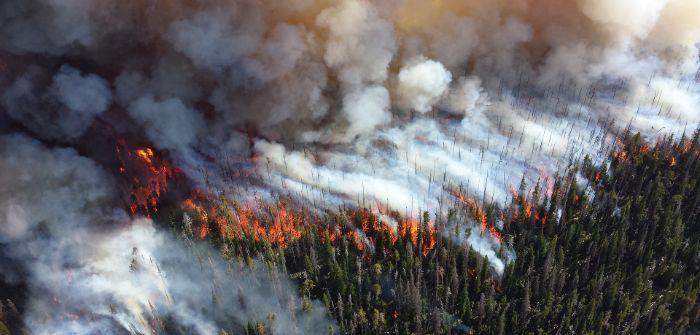The Copernicus Atmosphere Monitoring Service (CAMS), implemented by the European Centre for Medium-Range Weather Forecasts (ECMWF) on behalf of the European Commission, has reported that in recent weeks fires in eastern Russia, particularly in the Sakha Republic in the Far Eastern Federal District, have reached a severe fire intensity comparable to the values observed in June of the previous two years that could lead to similar impacts for the rest of the fire season if they stay on the same trajectory.
Simultaneously, devastating wildfires have been flaring up in British Columbia, Canada, as well as California and Arizona, and other western US states, regions currently affected by heavy droughts. Scientists from CAMS have been monitoring wildfire activity in these areas since the start of the boreal fire season in May 2021.
The scientists reported that since early June, fires have been occurring in the western US beginning in Arizona, which was heavily affected by droughts, showing an intense fire radiative power (FRP). FRP is a measure of heat output, which can characterize the intensity of fires.
The data shows that the daily fire radiative power of the Arizona fires was well above average during the whole month of June, emitting smoke pollution into the atmosphere. Toward the end of the month, devastating wildfires have started flaring up in British Columbia, and California, showing a particularly strong fire intensity concentrated in a handful of very powerful fires.
Meanwhile, fires in the Sakha Republic have reached great intensity with very high daily FRP values. CAMS data shows that 2021, as well as the past two years, were all significantly above average, marking an upward trend for the region. Although June being the first month in which the fire season typically begins, the fires in Sakha Republic are already very severe and bear resemblance to the beginning of the record fires in 2019 and 2020.
Typically, the main fire activity in the region and the Arctic Circle occur in July and August. The past four years have seen the worst fires in the region during that timeframe and CAMS scientist will continue to monitor these fires to see if they stay on the same trajectory as previous years.
Mark Parrington, senior scientist and wildfire expert at the ECMWF Copernicus Atmosphere Monitoring Service said, “We are closely monitoring the fires in British Columbia and in the western US, as well as certain regions in eastern Russia and the Arctic Circle. These fires are burning with high intensity and have been emitting large amounts of smoke into the atmosphere.
“A significant number of wildfires usually occur in regions with drier conditions and higher temperature, and early evidence suggests that this might also be the case with these fires. Our monitoring does not only look at the intensity of the fires, but rather analyses the wider scale impacts of wildfires and smoke emissions as well, like their impact on air quality, for example,” he added.



